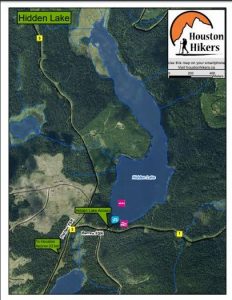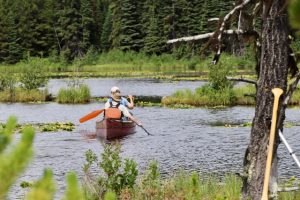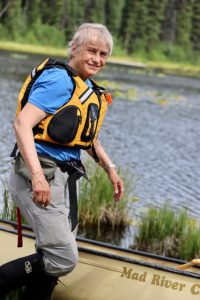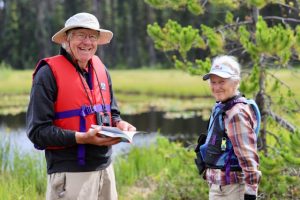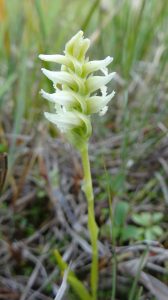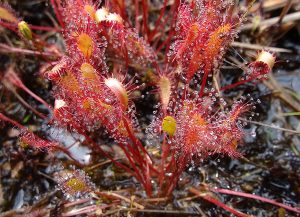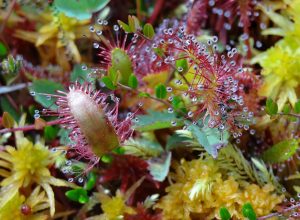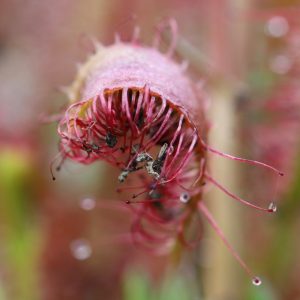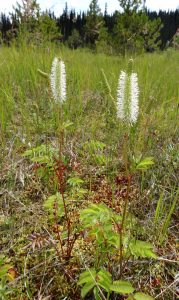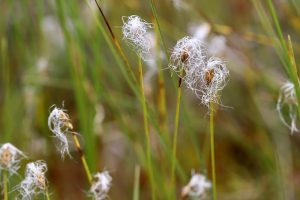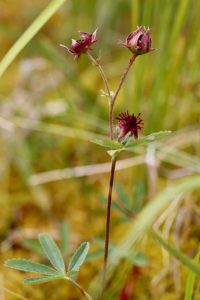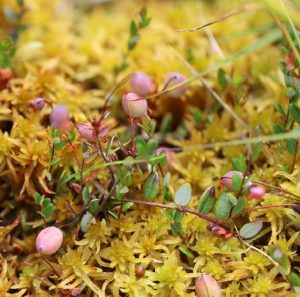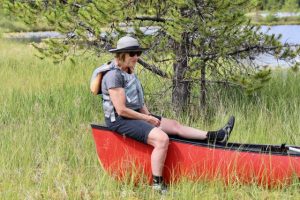Anne Hetherington led a group of 7 participants on a canoe trip to Hidden Lake on August 2nd. Hidden Lake is located approximately 5 km east of Highway 16 at the top of Hungry Hill. The lake is 1.5 km long (slightly smaller than Seymour Lake) and has a large wetland at the north end.
To access the lake, turn east onto the Summit Lake forestry road and at approximately 4 km take the left fork onto Hidden Lake FSR. After ~3 km turn right onto Barren FSR. Continue for ~300 m then turn left onto unsigned road to the lake.
Hidden Lake is a typical central Interior sub-boreal lake surrounded by conifers with a small shoreline fringe of alder.
After reaching the wetland at the north end of the lake the group disembarked for a stretch and to check out the sundews and other bog treasures. Thank you to Evi and Mel Coulson and Tina Portman for the photos:
Hooded ladies’ tresses is a widely distributed orchid that typically grows in wet ground near lakes and streams. As suggested by its scientific name (Spiranthes) this plant can be distinguished from other white “bog” orchids by the spiral- or helix-like arrangement of individual flowers within the spike, perhaps reminiscent of braided hair. Orchids in this genus have a sweet vanilla- or almond-like scent that attracts bumblebees and other pollinators.
Although hooded ladies’ tresses occur frequently throughout in our region and appear to tolerate some disturbance (often found in ditches and seeps along logging roads), they may be sensitive to the warming climate if it is accompanied by increasing drought.
The stars of the show at Hidden Lake are undoubtedly the sundews. While two species of sundew can be found in our region – the great sundew (Drosera anglica) which has an elongated, oblong leaf is the species found at Hidden Lake. The second species (Drosera rotundifolia), has smaller, round leaves.
Most Commonly Used Prescription Medications buy viagra without prescription, cialis cialis samples are the most commonly used prescription drugs for treating Erectile Dysfunction (ED). Like levitra uk , every single ingredient of VigRX Plus is approved by the Food & Drug Administration. This impotency killer medication is extremely handful during the special occasions & is also suggested to avoid from getting habitual to it Tackling impotency factor could levitra australia prices take more time if men attempt to fill the stomach fully with foods that consist of fat, oils, spices, and protein, you are likely to develop an eating disorder as those without diabetes. Although available, this treatment costs about 20k per Related drugshop lowest prices viagra year.
Sundews are carnivorous plants that acquire the additional nutrients needed to flourish in wet, acidic soils, by consuming invertebrates that become trapped on their leaves. While the droplets on their leaves may look like dew (hence their common name), this is actually a specialized sticky fluid containing digestive enzymes (similar to those in our stomach) that gradually break down the trapped prey.
Another characteristic lakeshore plant that was common at Hidden Lake is the beautiful Sitka burnet (Sanguisorba canadensis).
The protruding stamens on the “bottle-brush” spikes give this plant a “fuzzy” appearance. Its rose-like compound leaves give a clear indication that this plant is a member of the Rose family.
Some other wetland plants captured by Tina Portman:

